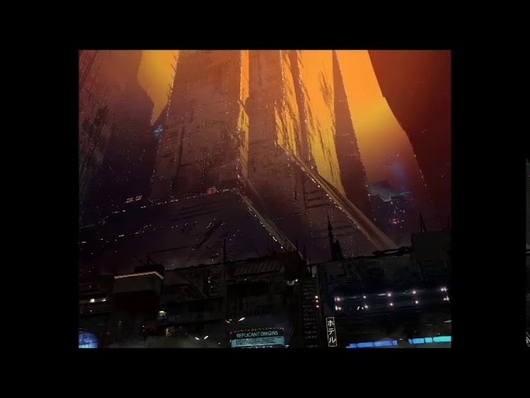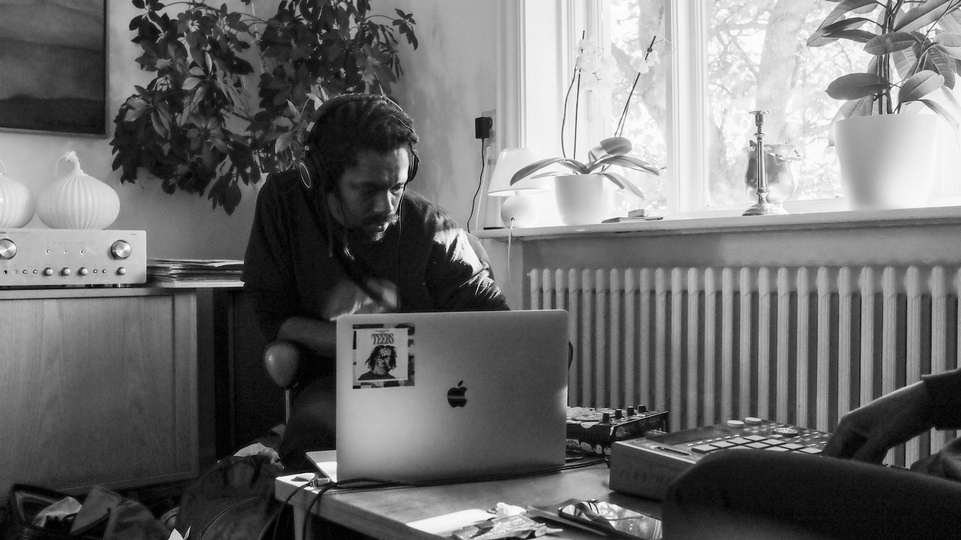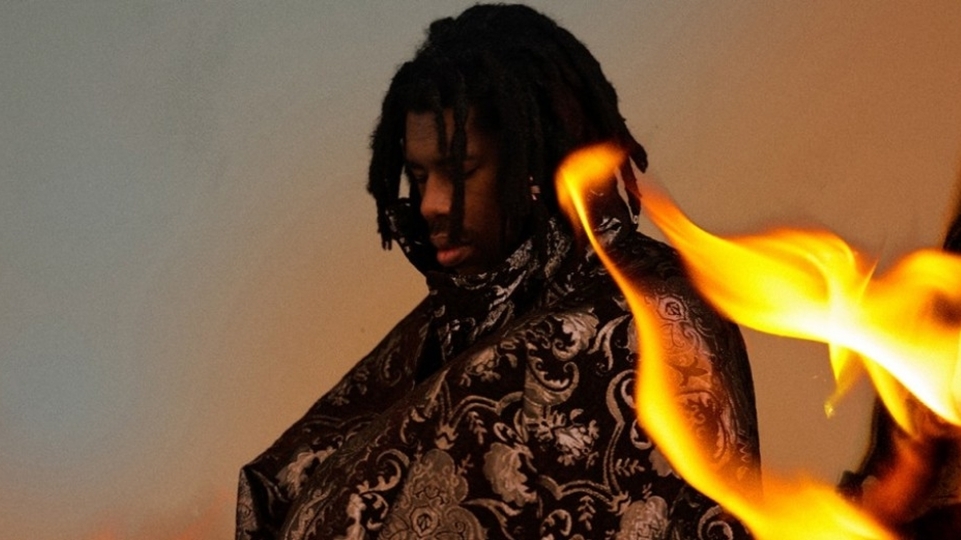
Kuedo's cinematic synth futurism
Kuedo’s first album, 2011’s ‘Severant’, blended filmic synths with trap beats and provided a blueprint for synthwave artists the world over. But after scoring a Blade Runner animation with Flying Lotus and various other projects, his new record offers a more expansive vision. George Bass quizzes him about avoiding nostalgia, eco-anxiety, and finding the confidence to make his music more emotional
The passing in May of composer Vangelis showed just how much influence the Greek synth pioneer has over electronic music. A BBC tribute showcased tracks by Daft Punk, Donna Summer and Massive Attack, while countless other artists have mined Vangelis’ hallowed Blade Runner score. Berlin-based Jamie Teasdale, who records as Kuedo and was formerly one half of dubstep duo Vex’d, is a big Vangelis fan — but not a worshipper. Though his 2011 debut album ‘Severant’ referenced the iconic soundtrack, it was far more than “Blade Runner set to beats”.
“Discovering arty world cinema was a huge coming-of-age moment for me as a teenager,” Teasdale tells DJ Mag now, 11 years later. “But at that same time, I discovered jungle/drum & bass, and that totally hijacked any other idea of creative output. I just lived and died for it — I probably over-depended on it for identity. I saw people who seemed relatable being music producers and DJs: that became the singular model I had for expressing creativity, I guess. For those years, I probably saw soundtracks more as something to sample.”
Even in samples, Teasdale’s brand of propulsive synthwave manages to capture the same widescreen awe that composers such as Vangelis are famed for. ‘Severant offered cutting-edge trap beats over lush keyboard textures. Reviews proclaimed his record “a new micro-strain of music”; primetime TV soundtrack spots followed. It seemed Kuedo had found the sweet spot between drum programming, melody, dancefloor appeal and movie licensing potential. Instead of flying to Hollywood though, Teasdale returned to his sound design, and in 2016 released ‘Slow Knife’, which maintained the rich synth pads of its predecessor, but swapped the sci-fi/adventure feel of ‘Severant’ for something gloomier. Think the rollercoaster ride of Aliens (1986) morphing into the bleakness of Alien3 (1992).
Now returning with his third LP ‘Infinite Window’ on Flying Lotus’ Brainfeeder label, Kuedo in 2022 feels more cinematic and more beat-driven than ever. It’s hard to pick out a single overarching influence on his new record. Whose soundtracks was he immersed in this time? Did he ever see himself as a composer or filmmaker instead of a musician?
“Although the first tunes I released were in the UK dance vein — grime, garage, jungle — I became increasingly in awe of and intrigued by more visually and emotionally evocative records, whether that was Vangelis or Cocteau Twins,” he says. “But there were a lot of internal barriers in the way, both in terms of teaching myself how music worked, and just daring to think of myself as composing rather than producing beats.”
This more orchestral direction has been reflected in the releases Kuedo oversees through his Knives label, but in terms of his own output, Teasdale went quiet after ‘Slow Knife’ until he resurfaced with a soundtrack to documentary, The Sprawl, two years ago. So what was he doing in between, and why has his third LP taken so long?
“Following ‘Slow Knife’, I focused on working on things for other people, and music for production companies. I was employed as a virtual reality sound designer for a while. I also had a kid coming, and I wanted to parent rather than tour. Some people can stay productive in the evenings when they have very young kids; honestly, I’m just in awe of them. They’re a mystery to me.
“Inevitably I started writing my own music again, but then the pandemic took out any remaining spare time since all kindergartens closed. So yeah, things slowed. I nearly released ‘Infinite Window’ in 2018 or 2019 as an EP, but I committed to turn it into an album for Brainfeeder instead.”
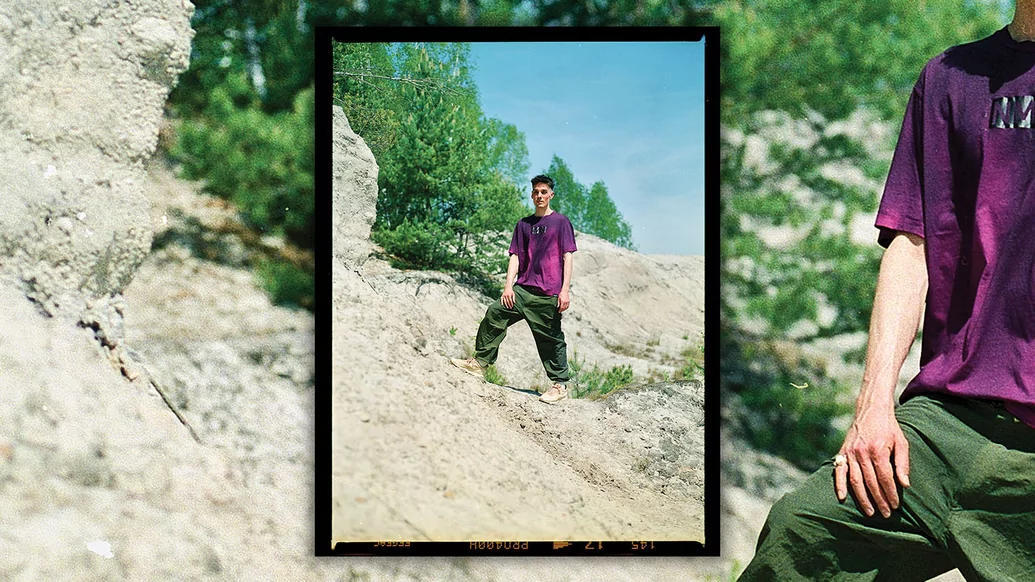
The wait seems to have paid off: ‘Infinite Window’ will surely dominate end-of-year lists. Alongside its sci-fi tones is an adoration for recent jungle drum grids, and melodic R&B/pop such as The Weeknd’s ‘After Hours’. Recently guesting on Benji B’s Radio 1 show, Teasdale spoke about how the Canadian’s ‘Alone Again’ sounds like “stars exploding”: a sensation the tracks on ‘Infinite Window’ repeatedly revisit.
“[Album track] ‘Shadow Dance’ came from a sketch in 2013 I think, but the drums were so weakly worked out that I had to strip them out and build a new drum track,” Kuedo says. “That probably inspired me as I sketched out the first two sections of ‘Harlequin Hallway’ around the same month in 2018. With that in place, the release was going to have a strong beat orientation, so it needed more complementary drums to complete it. In 2020, I roughed out beat sketches for the title track, and that last ‘Harlequin’ section. So that one post-‘Severant’ beat sketch sparked off a chain of beat tracks. It’s that thing when something starts taking its own shape, you let it be what it wants to be — so long as you like where it’s going.”
It seems the rest of the planet is on a similar journey. In 2011, Kuedo’s debut employed nods to Giorgio Moroder’s Scarface theme and Wendy Carlos’ Tron; in the decade since, there’s been an immense ’80s musical revival with shows like Stranger Things and labels like Death Waltz and Burning Witches making use of analogue synthscapes. Does Teasdale feel part of this movement — or that he may have accidentally triggered it?
“I can’t say I do, but it probably is true that I was slightly pushed away from using upfront synth sounds for a while. I think that’s part of the palette shift on my ‘Assertion Of A Surrounding Presence’ EP from 2015. I had to get over that. I always deeply loved using fairly raw synthetic sounds, and it’s more true, exciting and productive to continue exploring and playing with those materials, rather than force myself to use different materials just because they’ve become more commonplace. I really embrace the idea that all creative works, past and present, are in constant intergenerational conversation with each other. I’m not so hyped by the idea of artists compiling references to their favourite media products within their work.. that feels too [sci-fi novel/movie] Ready Player One to me.”
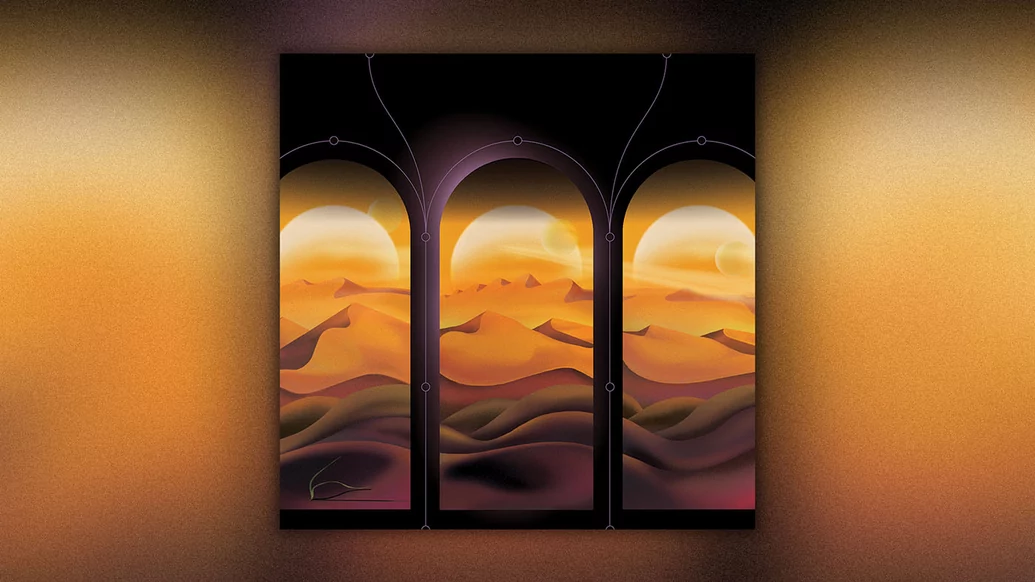
The resurgence of the ’80s synth palette no doubt contributed to at least one big break for Teasdale: working with Flying Lotus on the score to Blade Runner 2022 Blackout. The animated short serves as a bridge between the Blade Runner (1982) and Blade Runner 2049 (2017) movies. Was it a dream come true, or was Teasdale wary of following in the footsteps of Vangelis?
“It was exciting and intense since we only had a week to turn around the score,” he admits. “There wasn’t any time to think: it was just hit the studio and start recording ideas. Lotus emailed me out of the blue. I’m happy to follow in a few of the footsteps of artists I love, and am stylistically indebted to.”
The recording experience may have been energising, but Blade Runner 2022’s central theme — about a nuclear blast that causes a global [electromagnetic pulse] EMP event — is anything but. Did the fear of societal breakdown feed into ‘Infinite Window’, the cover of which depicts a barren desert landscape?
“Around late 2019-2020, when I committed to writing more to turn ‘Infinite Window’ into an LP, I could clearly feel out the direction it wanted to go in, and whenever I tried to think of it in visual metaphors, something like odd architectural shapes in a sun-blasted landscape came to mind. Maybe something like that video game Journey [2012]. There was some obvious eco-anxiety fuelling that, but the textures already felt somehow sun-baked and weather-beaten. I leaned into that when I was producing and mixing it; I wanted it to feel more saturated and differentiated from previous releases in that way. Whereas with ‘Slow Knife’ I was going for a glassy, cold, airy sound, here I aimed at a more rough, hot, sand-stone texture.”
The soundtrack and future-beat disciplines of the album are perfectly balanced, from the trance bassline of the title track to the reverberating string melody of ‘Aoelian Bodies’. Boards Of Canada fans will delight at ‘Time Glides’, whose purring low-end sounds like one of the Scottish duo’s warmer incidentals set to breakbeats. Although it wasn’t part of Teasdale’s Blade Runner 2022 score, it could perfectly soundtrack the scene where the pivotal nuclear missile cruises over an LA backdrop.
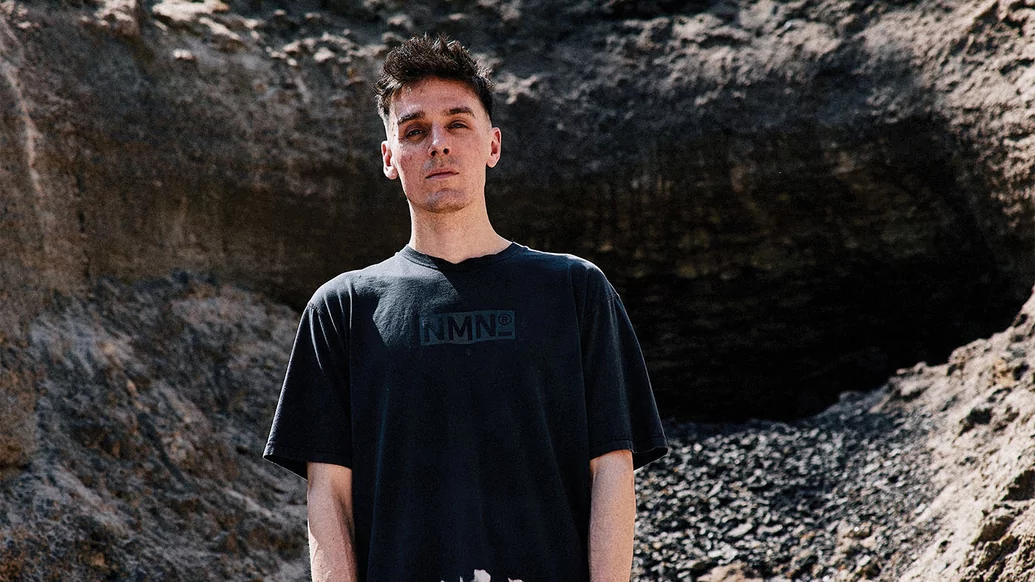
However, by evoking the sounds of Tangerine Dream and other Cold War synth pioneers on ‘Infinite Window’, isn’t Teasdale indirectly courting nostalgia? Does he feel that the smart cities promised by ’80s sci-fi will come to pass, or is he grieving for a future that might no longer be possible?
“I’m not sure I’ve ever felt this melancholy of yesteryears’ futures not coming to fruition, though like anyone, I feel curiosity and romance about some of the imaginative zones people opened up in different periods of time. Getting caught up in retro cosplay, though — I’ve only ever seen that as a trap which I don’t want to get baited into.
“I also don’t want to be weirdly disdainful of past styles. For example: I love simple synth sounds, echo trails and warbly tape effects separately, and in combination for their own merit. But not because they remind me of ’80s imagery. I’m also not going to avoid them in case they remind someone else of ’80s VHS movies.”
What about the off-screen future? Before recording as Kuedo, Teasdale’s work as part of Vex’d was more minimal grime and early dubstep. Does the climate emergency mean Teasdale’s next LP will trade trap beats for something gloomier — dark ambient, perhaps?
“I was actually trying for my lighter synth sound before Vex’d. When I wasn’t making jungle or dark garage, I would fairly often try to make slow tracks that sounded like Vangelis with a pop or hip-hop vibe. My first idea for a project with Roly [Vex’d] was a kind of spacey ambient synth-pop hip-hop thing with vocals. It was really bad.
“With ‘Severant’, I’d been through some experiences in my personal life that gave me a subject to focus on and process. I just wanted at least one record where I could hear myself in it, because I hadn’t found that when listening back to previous efforts. I also like the idea of music as having a shared value for emotional processing, and you just have to put yourself in it for that to happen.
“I’m not sure if there’ll be major switch-ups. There are many production approaches I’d like to take on, but it might be that I can offer more by focusing on extending a direction, rather than switching it up over and over. You need to change something up to stay excited, but you can also go deeper by focusing ‘in’ rather than spreading ‘out’.”
